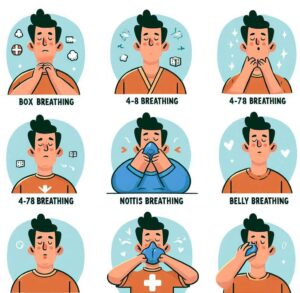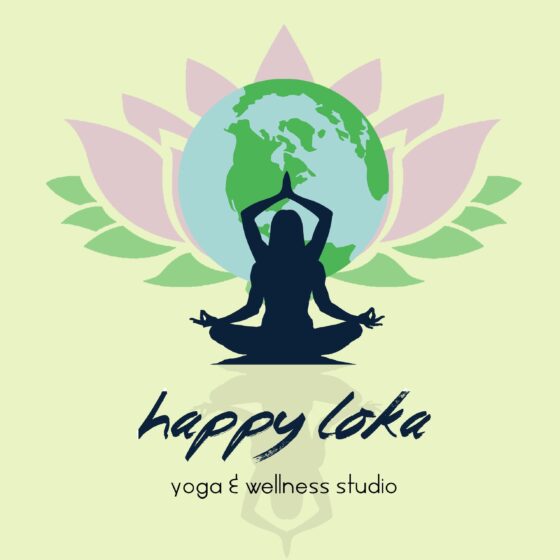Understanding the Science of Breathing for Stress Relief

The human body is a finely-tuned machine, capable of responding in an instant to situations posing physical or psychological threat. This is made possible through an inherent defense mechanism known as the ‘fight or flight’ instinct. When stressors cause the body to perceive danger, a complex chain of events is initiated. The body is flooded with hormones like adrenaline and cortisol that quicken the heart rate, tighten the muscles, and accelerate the breathing – all to prepare for either confrontation or retreat.
The breath, in fact, plays a more crucial role in this process than one might assume. Rapid, shallow breathing is a hallmark of the stress response; it’s our body’s way of ensuring we have the oxygen required for immediate action.In the modern world, our bodies often misinterpret non-life-threatening situations as serious dangers, causing us to enter ‘fight or flight’ mode quite unnecessarily.
Enter controlled or mindful breathing, a subtle yet powerful way to convince our body that it is not in danger and discourage it from reacting overly dramatically. Controlled breathing occurs when we consciously take command of our breath, dictating its depth, duration, and pace. We implement long, deep inhalations and full, complete exhalations, guiding our bodies towards a state of calm and relaxation.
The connection between breathing techniques and stress relief is not a mere hypothesis, rather it’s backed by substantial scientific research. Studies have demonstrated that mindful, controlled breathing can effectively lower elevated blood pressure – a common accompaniment of chronic stress. It can also slow the otherwise swift secretion of stress hormones into the bloodstream. The overall effect is an induced state of calm and peace, which not only counters the immediate stress response but also fosters long-term resilience against ongoing stressors in our lives.
Step by Step Guide to Breathing Techniques for Stress Relief
Known as diaphragmatic breathing, this technique is one of the foundations of stress relief through breath work. It revolves around inhaling profoundly into the lungs, which consequently engages the diaphragm – a muscle hidden beneath the base of the lungs that plays a key role in respiration. For most people, shallow breathing, primarily involving chest movement, is the norm. Deep breathing breaks this pattern, leading to improved oxygen flow and healthier lung capacity. To practice it, start by inhaling slowly through your nose, inviting the breath to fill your lungs while consciously observing your belly rise. Hold the breath for a few seconds, then exhale through your mouth, witnessing your belly fall as you release that breath. The action of engaging the belly and observing its movement helps induce a relaxation response due to the increase in oxygen levels, and the consequent reduction in heart rate.
Box breathing, or square breathing, is a powerful method for stress relief, used even by Navy SEALS to remain calm in high-pressure situations. This technique involves four phases – each occupying an equivalent count of four – represented by the four sides of a box. These phases are: inhaling, holding the breath in, exhaling, and holding the breath out. The practice is known as box breathing due to the cyclic, repetitive nature of these four phases, akin to the sides of a box. The uniform count urges you to concentrate on your breath and promotes slower, deeper breaths, which in turn help calm the mind, reduce anxiety, and enhance focus.
The 4-7-8 (Relaxing Breath) Exercise. This breathing technique, sometimes called the relaxing breath, is a standout in the stress relief toolbox. It involves inhaling for a count of four, holding the breath for seven counts, and exhaling over a duration of eight counts. The controlled and prolonged release of breath encourages your nervous system to wind down, subside hyperactivity, reduce tension, and prevent anxiety. Due to its calming and sedating effects on the system, it is often referred to as a natural tranquilizer for the nervous system.
This technique is a unique blend of deep, diaphragmatic breathing and the power of imagination. Along with deep inhalation and exhalation cycles, the practitioner is encouraged to visualize a peaceful environment or experience, painting a detailed mental picture. This mental journey – coupled with attentive breathing – not only enhances the relaxation response invoked by the breathing itself but also diverts the conscious mind from ongoing stressors. The uplifting imagery coupled with effective breath work provides a two-fold impact on the practitioner’s overall sense of tranquility and peace.
Tips to Incorporate Breathing Techniques in Daily Life

For these breathing techniques to be truly beneficial, it’s important to make them a part of your everyday routine. Here are some strategic tips on how to seamlessly introduce these practices into your daily life:
The timing of your breathing exercises can have significant impact on their effectiveness. One ideal time is early in the morning. As soon as you rise, incorporate these techniques to help set the tone for a calm, centered day. You can also practice these breathing techniques during the day, preferably at moments when you feel your stress levels escalating. This immediate intervention can help neutralize your stressful reaction. Another optimal time is right before bed, engaging in a round or two of guided breathing can guide you into a restful sleep by calming your nervous system and clearing your mind.
When it comes to breathing techniques, consistency is key. While it’s an excellent tool for confronting immediate stressors, regular practice can improve both your physiological adaptation to stress and your skill in performing the techniques. With time, you can train your body to invoke relaxation more readily and condition your control over your breathing patterns. This consistent practice serves as an ongoing form of ‘training’ for your nervous system, making you more resilient to stress-evoking scenarios over time.
Think of these breathing exercises as mandatory appointments with yourself. To establish a habit of practicing these techniques regularly, designate specific time periods in your daily schedule. This could take the form of a reminder in your calendar or a designated time slot during your work breaks. Setting aside intentional time not only heightens consistency but also allows you to fully engage in the process without a rush, maximizing the benefits.
Be aware that it’s entirely normal if you find these practices challenging at first. You may struggle with focus, keeping track of your counts, or even simply calming your mind. In such situations, it’s crucial to be patient with yourself. Remember that these techniques aim to bring long-term improvements, and this requires time and dedication. With regular practice, what once seemed challenging will become progressively easier and the techniques will result in more significant relaxation and stress reduction.
